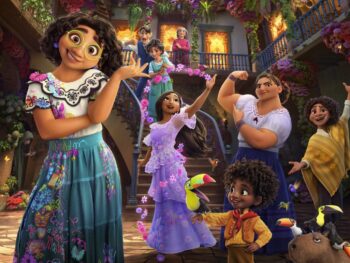Re-reading a book again, for the first time
February 15th, 2022 By John Hulden
By John Hulden
On April 30th I’ll attend, oh, maybe my 34th Synod Assembly. I look forward to meeting in-person with the church-y folks of the Minneapolis Area Synod as we safely spread out at spacious Central Lutheran Church for a shortened assembly. Almost like old, pre-pandemic, times. Hey, we are even promised “Gourmet Box Lunches”!
We meet under the theme “Life Together”. Our guest speaker, Dr. Eric Barreto, will help us explore the Book of Acts. The recent registration email explained: “Just as Dietrich Bonhoeffer wrestled with what ‘life together’ meant for Christians in Nazi Germany, we wonder what ‘life together’ means for Christians in the dual pandemic of COVID-19 and racial injustice.”
Hey, I thought, I have that book by Bonhoeffer! Wait, have you heard of Dietrich Bonhoeffer?
Bonhoeffer was a young Lutheran pastor from Germany who resisted the evil Nazi regime. In April of 1945, at the age of 39, he was killed at the Nazi concentration camp in Flossenburg. 
As a pastor in his 20’s and 30’s, Bonhoeffer wrote insightful essays, letters, and books about what it means to live with Christ and how to act as a Jesus-follower in the world.
The book “Life Together” was written while Bonhoeffer lived communally with twenty-five vicars in an underground seminary in the late 1930’s. After a few years, the Nazi Gestapo shut down the community and ordered Bonhoeffer to stop writing and publishing. He didn’t stop. Bonhoeffer was sent to prison after he was involved in a plot to assassinate Hitler. (Another important book is his “Cost of Discipleship.”)
I GOT TO THINKING, SINCE MY SEMINARY DAYS in the 80’s, I have read much, much, more about Bonhoeffer, and what folks think about Bonhoeffer, than I have spent time actually reading Bonhoeffer.
So, I found my copy of “Life Together,” copyright 1954, and cracked it open. Yes, it made a cracking noise. For real. The glue on the paperback spine isn’t what it used to be.
“So, I found my copy of ‘Life Together,’ copyright 1954, and cracked it open.”
I blocked off time last week and read all 122 pages. Yay! (Note: by far, the hardest part was blocking off the time.) And you, my diligent blog readers, if you dare click on the link, can be the beneficiaries of four pages of my “best of” from “Life Together,” which are linked at the bottom of this blog. Below are a few “best of” moments to get you interested.
Bonhoeffer, the theologian and martyr, has had a deep impact on Lutherans around the world. And the ideas written more than 80 years ago can inform our “Life Together” today. Maybe, block off some time to read Bonhoeffer and ask your deacon or pastor what they think of his writings!
Chapter 1: Community
“It is not simply to be taken for granted that the Christian has the privilege of living among other Christians. Jesus Christ lived in the midst of his enemies.” 17
Chapter 2: The Day with Others
“As a whole the Scriptures are God’s revealing Word. Only in the infiniteness of its inner relationship, in the connection of Old and New Testaments, of promise and fulfillment, sacrifice and law, law and gospel, cross and resurrection, faith and obedience, having and hoping, will the full witness of Jesus Christ the Lord be perceived.” 51
Chapter 3: The Day Alone
“Let him who cannot be alone beware of community. He will only do harm to himself and to the community… The reverse is true: Let him who is not in community beware of being alone. Into the community you were called, the call was not meant for you alone; in the community of the called you bear your cross, you struggle, you pray.” 77
Chapter 4: Ministry
“[Ministers] forget that listening can be a greater service than speaking.” 97
Chapter 5: Confession and Communion
“But it is the grace of the Gospel, which is so hard for the pious to understand, that it confronts us with the truth and says: you are a sinner, a great, desperate sinner; now come, as the sinner that you are, to God who loves you. He wants you as you are; He does not want anything from you, a sacrifice, a work; He wants you alone.” 110-111
Can’t block off the time to read a whole book? No problem! John’s “Best Of” from “Life Together” can paint a picture for you!




 where it originated, but here’s a version:
where it originated, but here’s a version: the practices that we hang on to because “that’s the way we do things.” Very few practices are self-justifying and I’m willing to bet that if we get curious and try to understand the ins and outs of our church culture, we might find some things that just don’t make sense anymore.
the practices that we hang on to because “that’s the way we do things.” Very few practices are self-justifying and I’m willing to bet that if we get curious and try to understand the ins and outs of our church culture, we might find some things that just don’t make sense anymore.
 By Emilie Bouvier
By Emilie Bouvier



 By Kayla Zopfi
By Kayla Zopfi 
 By Pastor John Hulden
By Pastor John Hulden
 By Maya Bryant
By Maya Bryant 



 By Brenda Blackhawk
By Brenda Blackhawk

 Why start a university in NE Nigeria?
Why start a university in NE Nigeria? 